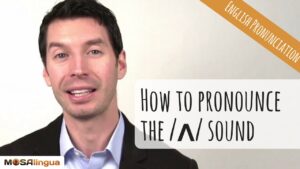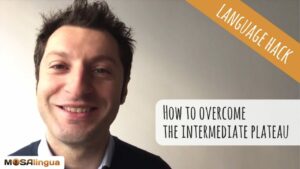To be able to speak about the past in German, you have to master the Perfekt tense. This is the tense that is used the most in spoken language to express the past in German, with almost all verbs. We have a similar tense in English called the past perfect. Check out our lesson, and a video with tips from our German teacher, Laura, on how to master the German Perfekt and speak properly about the past.

How to Talk About the Past in German
To correctly speak about the past in German, you’ll mainly use the German Perfekt. It’s pretty simple as far as German tenses go. At least, for the majority of verbs. So you should be able to learn it fast enough. Whenever you’re ready, let’s get started!
Forming the Perfekt in German
The Perfekt in German is constructed in 2 stages. Here’s how it’s done (like our past perfect):
- First, the present indicative of the verb “haben“:
– ich habe (I have)
– du hast (you have)
– er, sie, es hat (he or she has)
– wir haben (we have)
– ihr habt (you have – for a group)
– sie/Sie haben (they have) - Then, the verb you want to conjugate in the past perfect. This is called the Partizip II.
For regular verbs, just take the verb infinitive, remove the –en at the end and replace it with a –t, and add ge- at the beginning. For example, lernen becomes gelernt. We took off the final –en and replaced it with –t, and added ge– to the beginning.
Here are a few examples:
- For “I have learned”: you should use “Ich habe” (I have) and “gelernt” which we just saw -> Ich habe gelernt.
- “I have said” with “sagen” = say -> Ich habe gesagt,
- “I have played” with “spielen” = play -> Ich habe gespielt,
- or “I have lived” with “wohnen” = live -> Ich habe gewohnt.
Exceptions
Of course, it would be too easy if there were no exceptions…
First, the Partizip II can also sometimes end in –en. Take the verb “sehen,” which means “to see.” You shouldn’t say “Ich habe geseht,” but rather “Ich habe gesehen.” But don’t worry, the first version may be wrong… but people will still understand you if you make this mistake.
Another exception: I told you that to construct the past in German, you have to use the present of “haben” and the Partizip II. However, for verbs that imply movement or a change of state, you’ll use the verb “sein” (to be) instead of “haben.”
- ich bin = I am
- du bist = you are
- er/sie ist = he/she is
- wir sind = we are
- ihr seid = you are (for a group)
- sie/Sie sind = they are
For example, the verb “fahren” (“to drive”) implies a movement. The Partizip II is “gefahren.” Here, we use the verb “sein“:
- ich bin gefahren
- du bist gefahren
- er/sie ist gefahren
- wir sind gefahren
- ihr seid gefahren
- sie/Sie sind gefahren
The same goes for other common movement/change verbs like “gehen” (to go) and “kommen” (to come), and also “aufwachen” (to wake up) and “einschlafen” (to fall asleep). However, the best way to learn when to use “haben” and when to use “sein” is with practice.
Word order with the German Perfekt
Another thing I should mention is the German Perfekt and word order. For example: “Ich habe gestern einen Film im Kino gesehen“ (“yesterday, I saw a movie at the cinema”). Did you notice that I put the Partizip II (here “gesehen“) at the end of the sentence?
This is a general and very important rule that applies as soon as you have a two-part verb form in German. The conjugated form goes in the second position in the sentence, and the other part goes at the end. Again, this is something you’ll get used to with time and practice. Don’t be afraid to make mistakes and be corrected! This is how you’ll learn best. Soon you’ll begin to use this past tense naturally and without even thinking about it.
Video Tips About the Past in German
Laura, from the MosaLingua team, made a video to explain exactly how to form the past in German, plus how to use it easily and quickly. This video is in German, but you can turn on subtitles (in English, German, or one of 4 other languages). Just click on the gear icon at the bottom right of the video.
Don’t miss the other German grammar videos on our YouTube channel. We regularly publish videos to make learning the German language easier, so don’t forget to subscribe to our channel. It’s free!
Subscribe to our YouTube channel for all of our tips and tricks
More German Grammar
To complete this lesson, do not miss our other articles on German grammar, and our German grammar guide.
- Find out why German grammar isn’t as hard as you think
- Check out our video on the present tense in German
- Consult our German grammar guide if you need some extra help with grammar or conjugations
And don’t forget to come back and see us again soon. We’re working on adding more German grammar lessons. 🙂
Related posts:
Start improving your German today
Good news: we can help!
More good news: you can get started for free! With your free trial, you can test drive the most effective method for learning German for the next 15 days!
Vocabulary flashcards, videos with subtitles, audiobooks, articles adapted to your level – with MosaLingua Premium (Web & Mobile), you’ll have access to all this and more. Get started right now. It’s free—and risk-free—to try!





Comments